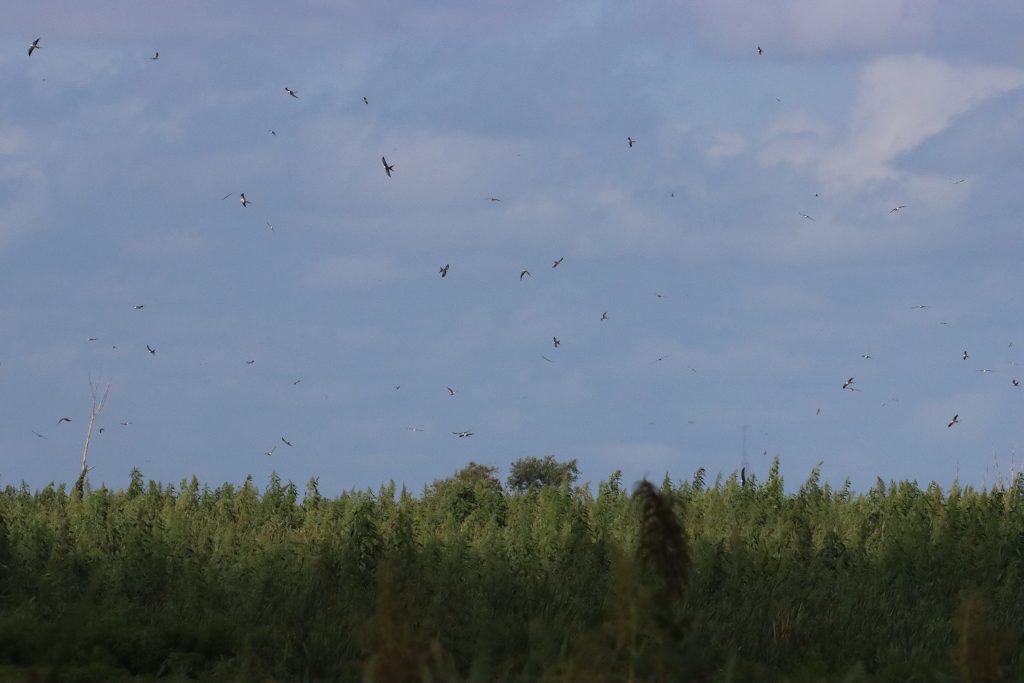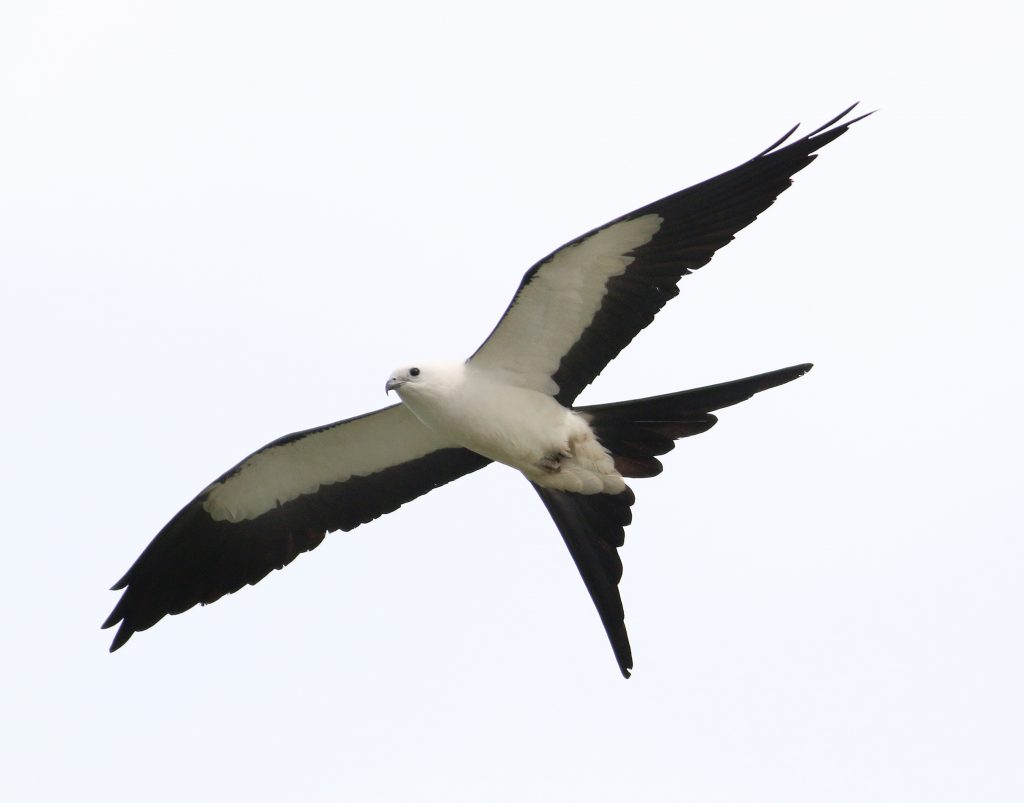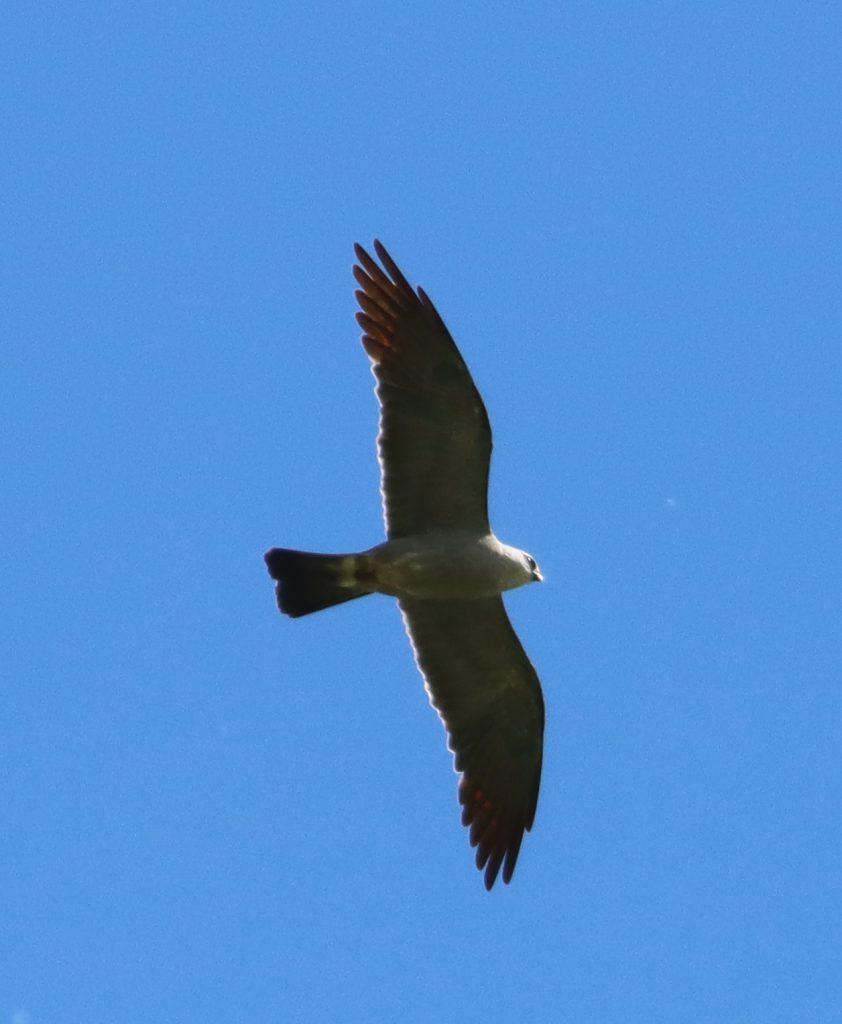Kites are arguably the least known group of raptors, at least by the general public. If you stop John Q. Public on the street he will be happy to tell you about the eagles, hawks, vultures, Ospreys, and perhaps falcons and owls that they have seen. But kites? To the general public those are the things that people fly on the beach with a long string attached. For us birders the kites fall into the ‘most desired’ category. (Trivia question: how many of the seven North American Kite species can you name? Answer at the bottom of the page.) With that in mind, yesterday brother Rich and I drove to the nearby Lake Apopka Wildlife Drive in hopes of seeing the large numbers of Swallow-tailed Kites that amass in the area and have been seen recently. We were not disappointed.
The Lake Apopka Wildlife Drive is a one-way 11-mile drive on raised dikes through old farmlands that are going through the lengthy process of being restored to its natural wetland habitat. As such, it is a prime birding destination in Florida; in fact, it is the ebird hotspot with the most bird species recorded in all of Florida, with species such as Fulvous Whistling-ducks and Mottled Duck occurring regularly. It’s not just the number of species that is impressive, but also the number of individuals seen. For example, back in NJ we’d expect to see a few dozen American Coots and perhaps a Common Gallinule or two during a typical year. In contrast, during this past winter as many as 28,000 American Coots and 8,000 Common Gallinules have been reported at Lake Apopka, mixed in with the numerous wading birds and ducks. But what drew us here today was hundreds of Swallow-tailed Kites in recent reports. Indeed, as we drove around the dikes, we spotted a flock of birds soaring in the distance. Anyplace else, you might casually write them off as distant vultures. But when we got out of the car and looked though the bins, we were amazed at seeing a horizon filled with Swallow-tailed Kites.

These birds are all Swallow-tailed Kites. I counted at least 62 birds in this photo, and estimate that this was approximately 1/4 to 1/5 of the flock that stretched across the horizon. That means that we saw ~250-300 Swallow-tailed Kites today. Wow! My understanding is that the numbers will increase through this next month. Double Wow!

A close-up view of the large and graceful Swallow-tailed Kite. Now that is a strikingly handsome bird! Seeing even one of these birds is a treat…seeing 250-300 at a time seemed unreal.
The Swallow-tailed Kites clearly stole the birding show today, but we were not yet done kiting. As we neared the end of Wildlife Drive, we spotted another raptor flying over the turf fields. This one had the long pointed wings typical of a kite, but it was smaller and gray, perfect for Mississippi Kite. Indeed, we were able to spot three Mississippi Kites hunting over the fields. This was probably my first two-kite day in North America. A good day indeed!
Answering today’s trivia question: the seven Kite species that have been seen in North America are Snail, Mississippi, Swallow-tailed, Black, White-tailed, Hook-billed, and Double-toothed Kites.
